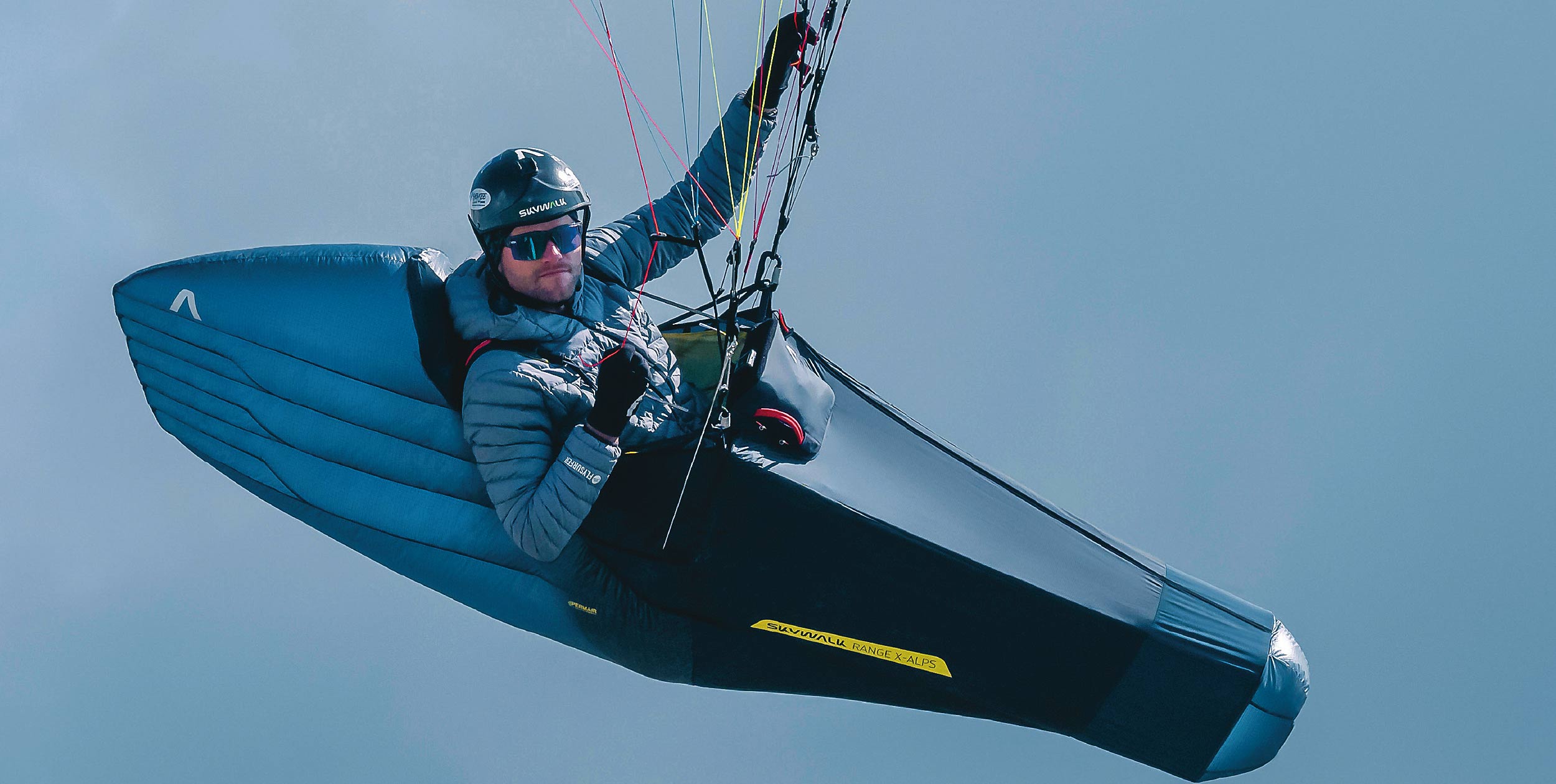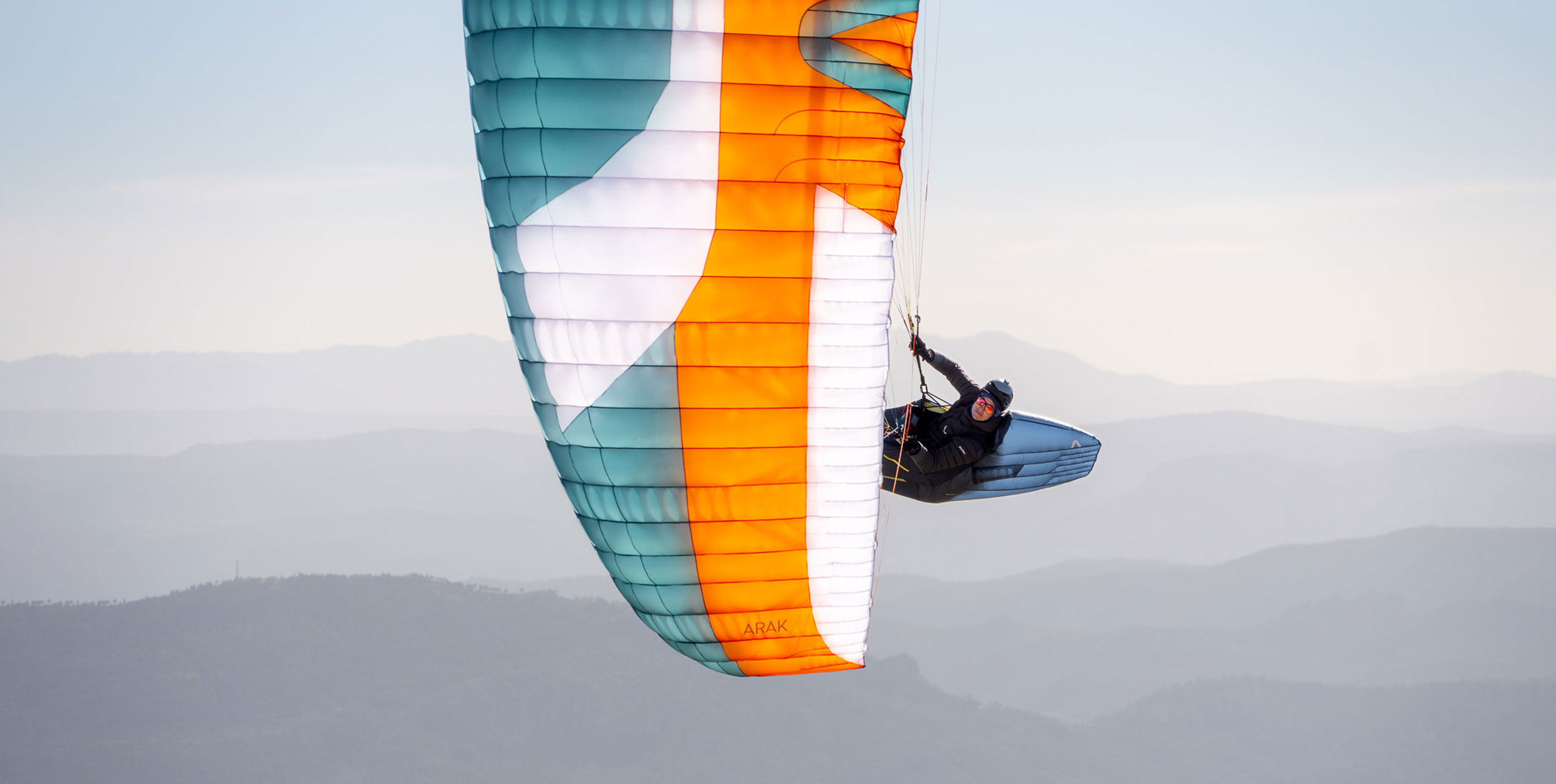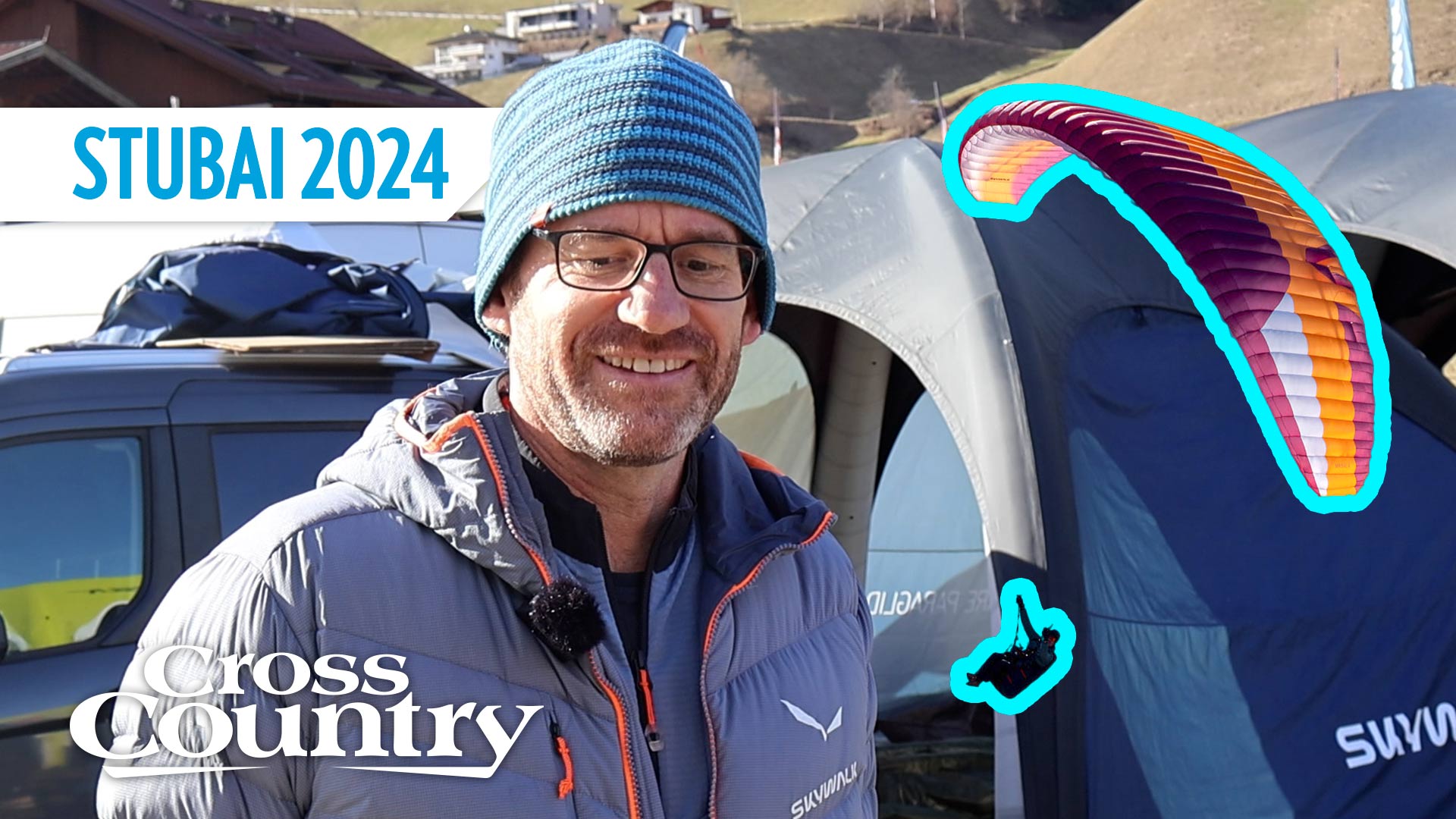On Sunday, 13 April 2014, Armin Harich flew 302.9km in the German flatlands to set a new national German record. Armin took off at 11:24am from the west launch in Schriesheim, near Heidelberg, took advantage of the WNW wind and, touched down at 7:41pm near Dingolfing. A partner in Skywalk, he flew a low-level EN B glider, the Tequila 4.
This is his report, published originally on the Skywalk website.

Armin Harich
Simply epic!
I still can’t believe it. Three days before the flight I wrote in the Facebook group XCCup that I would love to break Erwin Auer’s record of 281km. What I didn’t know is that it would happen so fast and that I would even pass the 300km mark. To fly this far here in Germany, a lot of things have to go right and nothing can go wrong.
I was extremely motivated. For this reason, I wanted to take full advantage of the Sunday, so I took a close look at the weather the day before. A weak cold front was approaching from the north and the wind was meant to be constant at 25 km/h from WNW with some useful cumulus clouds. Instable air ahead of the front meant that the thermals should be shooting up to 1000m by 11:00am and that they should last until about 7:00pm – a weather situation that you don’t often encounter. Because I choose my launch sites according to their proximity to free airspace, I also checked the NOTAMs.
Among other things, the restricted area ED-R 138 was not active on the weekend and the top had been lowered during the week to the current 3000m. OK, that’s 230km from where I was planning to launch, but I definitely wanted to fly farther than I did last year and it’s important to not let yourself get too distracted by having to fly around restricted airspace.
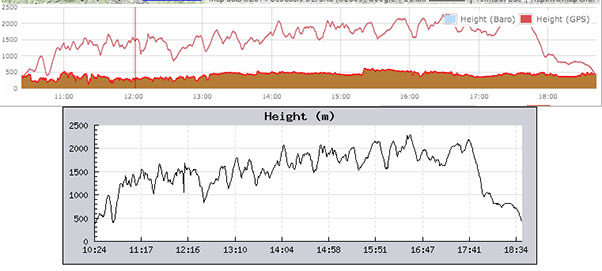
Armin Harich’s tracklog
In the morning the weather was looking even better. The cold front had slowed down and weakened, and this affected the forecast. That meant that Schriesheim (near Heidelberg) would be the optimal launch site. It’s one of the few launch sites in Germany where you can climb reliably as soon as the thermals kick in. The wind in Schriesheim at launch and at the landing zone was clearly out of the north and the west launch was still in shadows.
It took a while before the undersides of the clouds lost their ragged edges. Rouven Köhler and I launched together at the first opportunity and climbed in close formation, drifting with the NNW wind away from the control zone of the Mannheim airport.
Rouven managed to climb out over the summit, but because my climb was faster, he quickly joined me in my thermal. Soon we were ready to start our journey. Rouven chose a path along some small clouds toward Heidelberg while I flew an arc along some larger clouds, waving to him unsuccessfully that he should join me. Why worry about small fry when the big fish are biting. It would have been really cool to continue on together, but instead Rouven bombed out and had to land.
For the way I fly, I was already behind schedule. I continued on underneath the clouds and over the sunny southern flanks. In my mind I imaged a line between the sun-drenched slopes and the clouds, compensating for the wind drift. In light thermals I normally fly with half-bar and use full-bar in strong sinking air. I also use full-bar if I’m flying toward a strong, reliable thermal.
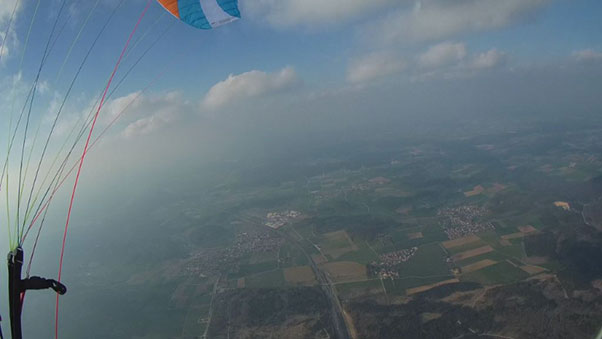
On track to 302km. Photo: Armin Harich
Before I crossed the Neckar River, I climbed back up to base, thinking that it would get worse near the Odenwald plateau. But I didn’t let myself become satisfied with zero lift thermals and continued on past ragged clouds, warm air pockets and trigger points to the next cloud. There, I got sucked up at a steady 3-4m/s, so I turned my TEQUILA4 M on its wingtip and corkscrewed up with a steep bank angle. Bingo!
At the time, I didn’t realize that it would be the strongest thermal of the day, but that didn’t deter me. If the thermals aren’t strong, then neither is the sink. I continued to try and find the optimal line.
I had already memorized most of the route by the terrain because the vantage point is better from below. I always plan to fly in the upper 70-90% of my working altitude. The higher I fly, the faster I can fly and act freely. When I’m low, I’m forced to accept weaker climbs and my bomb-out risk increases.
Again and again I spied sailplanes and used them as thermal markers, but by the time I got there, they were usually gone. I memorized their position exactly with respect to the clouds and terrain to help me find the line with the best climb. For the most part I followed a line with a good thermal or at least some decent float. I flew more or less a middle line under the clouds and, thanks to my high altitude, took updrafts as the came, dolphin-style.
In key places I climbed to the maximum altitude possible. According to my FreeFlight app I had a 20-22km/h tailwind from the west. Despite that I kept pressing to the south because the clouds looked better there and the cloud streets were aligned in this direction.
As soon as I left the hilly Odenwald and headed out into the flats, I could have used a little more wind. It was a calm, pleasant flight. I stabilized my glider with the speed bar or by shortening the C-risers to optimize the glide and the angle of attack — that helps to prevent collapses before they begin. I used the harness to compensate lateral loads.
By simply not flying low, your flight is more pleasant and less turbulent. It also didn’t hurt to have a stable glider, especially when I was busy with my iPad or radio. This makes flying fun and relaxed.
As I approached Niederstätten military airfield, I received confirmation by radio that the restricted area was not active. Over the Mulfinger launch site I found lift and climbed as I crossed the autobahn A7 between Ulm and Würzburg, passing the Aurach/Schwaigau tow-launch site from which Herbert Heumann und Patrick Tack would also made long flights that day. Then I saw the Altmühl lake. What a fantastic view! Over the Bromach lake the clouds to the north looked better, as Steffen Schmitt found in his flight. Since I couldn’t see any way of getting there, I continued along my own route, which turned out to be a good idea. As I glided, I peered at my “odometer”, which calculates OLC kilometers including three waypoints. The 200km mark seemed close now. Then I spotted the autobahn A9 from Munich to Nuremberg and flew high over Böhming. Pilots from there had flown to us and now I was going to fly to them. Great! By 5pm I had already passed 200km and had another two hours of thermals to go.
Gradually the thermals weakened. Forests and towns began to release the warmth they had stored during the day. I tried to fly as high as I could and took every bit of lift I could find. At 6:40pm I started my final approach to the end of the thermal day. Flying only over forests, I managed to keep my sink to a minimum even as climbing was no longer possible. Holding my course toward Dingolfing, I found a zero lift thermal that I circled in as the wind blew us further down range. As the sun sank behind the clouds on the horizon, I asked myself if restitution or ‘magic lift’ is possible in the flatlands. Wait – that can happen in moist valleys that store warmth longer. Bingo! Then the impossible happened. I found another, even larger zero lift thermal from which I even managed to squeeze some lift as I enjoyed the final minutes of my flight.
The autobahn A92 is also a thermal trigger. Amazing! It was 7.20pm and I was still in my zero lift thermal. I had already passed the 280km mark and I was still feeling ambitious, so I maxed out everything. 290km, 291, … I glided with a tailwind as far as I could. At the 299km mark I was still 30m high and had to turn back before a forest and land in a clearing. Would that be enough? Didn’t matter. Completely satiated, I landed at 7.41pm knowing that I definitely would not be home before midnight.
What a day!
See the tracklog
Armin Harich talks more about his flight in Cross Country issue 153 (May/June), due out in the first week of May
• Got news? Send it to us at news@xccontent.local
Buy and sell gear on Skyads.aero

